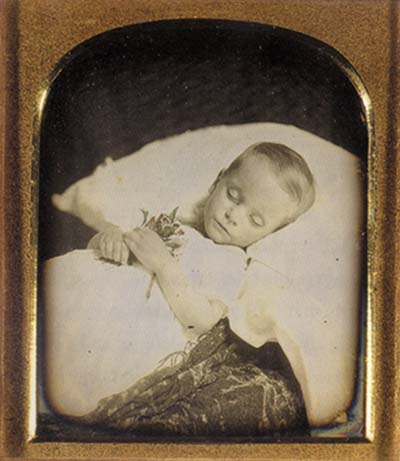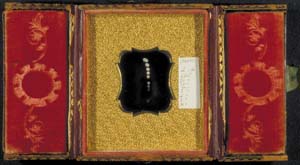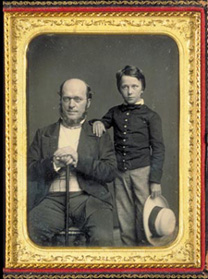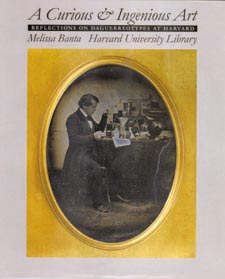Picture perfect
New book shows off Harvard’s daguerreotypes

Holmes was just one local luminary captivated by the new process. At Harvard and its environs, daguerreotypes were produced by the hundreds. And this year, a sampling of these beautiful images can be seen in the recently published book “A Curious & Ingenious Art: Reflections on Daguerreotypes at Harvard” (University of Iowa Press, 2000) by Melissa Banta, Adler curatorial associate at the Weissman Preservation Center at Harvard University Library.

Says Banta, “The book grew out of a preservation project to conserve, rehouse, and enhance access to the University’s daguerreotypes. It focuses on what we call the core collection of Harvard daguerreotypes – approximately 470 images (found in 14 Harvard libraries, museums, and archives) that were for the most part made of, by, or for members of the university community.
“Bringing this collection together was particularly rewarding,” Banta continues, “because of the extraordinary photographers and portrait sitters represented and the wealth of supporting archival material that tells the story of how these images were created and used.”
And Banta has integrated some of these accounts flawlessly into the series of biographical vignettes that accompany the stunning reproductions. In a very few words, Banta contextualizes the daguerreotypes, presents the lives of photographers and subjects, and still offers evocative particulars and arresting insights. Banta and company (M. Susan Barger, Deborah Martin Kao, and Robin McElheny contributed to the book, and Sidney Verba wrote the Forword) have produced a picture perfect volume.
Share this article






